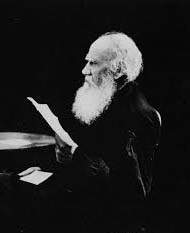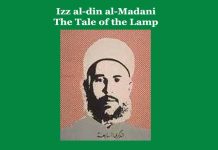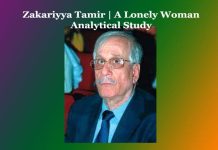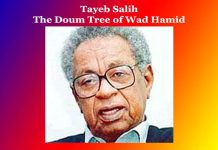Tolstoy | Three Questions | An Analytical Study
Tolstoy | Three Questions | An Analytical Study
Tolstoy | Three Questions | An Analytical Study
‘Three Questions’ is a Russian short story with some features of an ancient tale by Leo N. Tolstoy (1820-1910) that deals with the Theme of justice.
As seen in a parable, the author through this story enforces a moral lesson. The story is about a king who is anxious to know the answers to three particular questions. The questions are — first, how can he learn to do the right thing at the right times; second, who are the people he needs most and third, what affairs are the most important? To get the answers to these questions the king sent messengers throughout his kingdom, promising a large sum of money to him who would be able to give the right answers. Many wise men drew in and they offered many answers. Some told —the king needed a council of wise men who would help him to act at the proper time. Some said – for that power, the king should go to the magicians. Some argued that the king should have to go to the priests. Others said that soldiers were necessary above all others. But the king was not satisfied with these answers. At last, he decided to go to the reputed hermit who lived in a forest. Along with his guards he set out to his destination. But the hermit did not meet anyone if he is not an ordinary man. So the king before reaching the hermit’s hut left his sentry away and went up to the hermit. The hermit was digging the earth in front of his hut. He greeted the king and continued digging. The hermit was old and weak. The king going near asked him to answer his three questions. The hermit listened to the king but gave no answer. The king seeing him tired took the spade from the hermit’s hand and began to work in his place. The hours passed and the sun went down behind the trees. And at last, the king stuck the spade into the ground and asked him again to answer his three questions. “Here comes someone running,” the hermit said. The king turned round and saw a bearded man running towards them. His hands were pressed against his stomach from which blood was flowing. When the man reached the king, he fell down. The king and the hermit unfastened the man’s clothing and found a large wound in his stomach. The king washed and dressed it well. The man began to feel better and asked to drink something. They gave him something to drink. Already it became night and they fell asleep. The next morning when the king awoke from his sleep he asked the man who he was. Then the man said that he was his enemy. He came to avenge the king as the king put the man’s brother to death and seized his property. But while following the king the guards of the king recognized him and attacked him and wounded him. However, he could escape them. He expressed his gratitude to the king for tending him. Otherwise, he would have died. Then the man asked the king for his forgiveness. And the king not only forgave him but also returned his brother’s property and took him as his friend. After that, the king was ready to return and for the last time, he asked the king to answer his questions. Then the hermit said that he had already been answered. The hermit said, “The most necessary man is the man you are with at any moment, for no man knows whether he will ever need anyone else, and the most important business is to do that man good because a man is sent into this life for that purpose alone.
There are three characters in the story. The king is the principal character. He is portrayed as a type as well as an individual. He is a type like most kings, who commits injustice killing a man and seizing his property for which his brother took an oath to avenge the king by killing him. He is individualized as he is a knowledge seeker for which he goes to the hermit.
The second character is the Hermit. He is wise and teaches the king a good moral lesson by the parable of the wounded man.
The wounded man who was attended by the king and the hermit is the third character in the story. He was an enemy of the king because the king perpetrated injustice to his brother. But when he got justice then he became a faithful servant of the king.
In narrating the story the author has employed the Objective Method with skill.
The story, in Structure, is a perfect one. It bears visibly all the stages of a good short story. The opening is direct. In the opening, the storyteller introduces his principal character, the king who is a knowledge seeker. The story goes ahead to the complication when the king gathers many wise men to get the answers to his questions. The climax reaches when the wounded man reveals his intention that he came here to kill the king. The falling action comes when the Hermit explains the parables of the wounded man as to serve the answers to his three questions.
The Setting of the story is consistent with the events and situation. The author gives a good deal of description of his main character along with the environment of his event.
The Dialogues employed in the story is very logical as he uses them sparingly but all the dialogues have taken his story a step forward and unfolded the inner nature and motives of his characters.
The author has expressed his Philosophy of Life through the last speech of the Hermit that a man’s most important business is to do good to man.
The Language of the story is very simple as it is characterized by the use of concrete and formal words and phrases and free from poetic imagery and much emotional expression.
All the Qualities of a good short story as —unity of purpose, brevity, spontaneity and universality are present in this short story. The brevity which is taken of as the soul of a short story is also maintained throughout the story as all the component elements of a good short story are employed in the story with possible economy without causing any harm to the perfectness of the story. Thus the universality is gained by means of the reliable representation of the theme and event. The story begins and ends with a spontaneous logical order and the author seems not to use any force in bringing about the denouement of his story through proper stages.
As a short story, its Length is ideal as —neither very short nor long.
It has a feature of a tale of ancient times. In an ancient tale, it is seen that a story is told to explain some moral or religious lesson. So is done in the story because the episode of the wounded man may be considered as a parable that explains the answers to the king’s questions.
As all the component elements along with the required qualities of a good short story are present in it, in a logical order, so it may be called that it is a short story of the First Grade. 0 0 0
Tolstoy | Three Questions | An Analytical Study
Read More: Leo Tolstoy’s Short Stroy ‘God Sees the Truth But Waits’-An Analytical Study
N. B. This article entitled ‘Tolstoy | Three Questions | An Analytical Study’ originally belongs to the book ‘World Short Story Criticism‘ by Menonim Menonimus. Tolstoy | Three Questions | An Analytical Study
Books of Literary Criticism by M. Menonimus:
- World Short Story Criticism
- World Poetry Criticism
- World Drama Criticism
- World Novel Criticism
- World Essay Criticism
- Indian English Poetry Criticism
- Indian English Poets and Poetry Chief Features
- Emily Dickinson’s Poetry-A Thematic Study
- Walt Whitman’s Poetry-A Thematic Study
- Critical Essays on English Poetry
- Tawfiq al-Hakim’s Novel: Return of the Spirit-An Analytical Study
- Tawfiq al-Hakim’s Novel: ‘Yawmiyyat Naib Fil Arayaf’-An Analytical Study
- Analytical Studies of Some Arabic Short Stories
- A Brief History of Arabic Literature: Pre-Islamic Period …
Books on Linguistics by M. Menonimus:
- A Brief History of the English Language
- Essays on Linguistics
- My Imageries
- Felicitous Expression: Some Examples
- Learners’ English Dictionary
Related Searches:
- Short Stroy Criticism
- The Indian English Short Story
- Individual and Society …
- ‘Deliverance’ by Premchand Analysis
- Summary of Rabindranath Tagore’s ‘The Exercise Book
- Short Story ‘Yellow Fish’ Essay Example
- Notes on Roger Mais’s ‘Blackout’
- ‘Blackout’ by Roger Mais
- ‘The Dog of Tetwal’ Saadat Hasan Manto
- The Dog of Tethwal
- ‘The Jewels’ by Guy De Maupassant
- ‘The Necklace’ Essay
- The Piece of String’ Analysis
- ‘The Verger’ Summary
- ‘God Sees the Truth But Waits’ by Leo Tolstoy
- ‘God Sees the Truth But Waits’Themes
- The Three Questions
- ‘Three Questions’ Summary in English …











